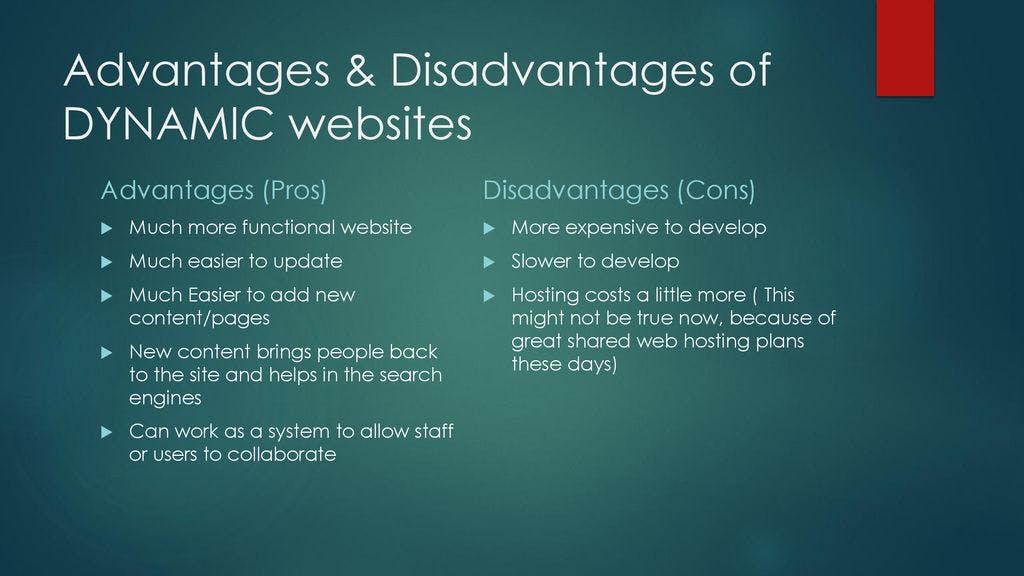Introduction to Dynamic Sites
A dynamic Website is a website containing data that can be mutable or changeable. It uses client-side or server scripting to generate mutable content. Like a static website, it also contains HTML data.
Dynamic websites are those websites that change the content or layout with every request to the web server. These websites have the capability of producing different content for different visitors from the same source code file. There are two kinds of dynamic web pages i.e. client-side scripting and server-side scripting. The client-side web pages change according to your activity on the web page. On the server side, web pages are changed whenever a web page is loaded.
Examples: login & signup pages, application & submission forms, inquiry and shopping cart pages.
How Dynamic Website works?
Given below shows how a dynamic website works:
The dynamic website displays content on a real-time basis. So, when the user wants to display the content, JavaScript checks the server for the contents being asked.
This is done by either checking the URL or responding to the user directly. Now, the request is sent to the server for the concerned data with the help of JavaScript.
A PHP script is run for checking the data in the server. This script is passed through SQL and a command is created in SQL with the information from JavaScript and PHP.
This SQL command is used to get data from the database as the database will not understand direct coding or any scripts. Now, the data being fetched by SQL is fed into the PHP script.
The conversion of data being received is done so that JavaScript understands the output. This conversion is being done with the help of a PHP script. JavaScript does not read SQL data and here Java Script Object Notation comes as a savior. JSON is being understood by JavaScript and PHP Scripts.
After receiving the JSON data from PHP, data is displayed on the website for the user. Here PHP acts as a bridge between SQL and JavaScript. The data displayed on the screen can be manipulated with the help of HTML and CSS. This makes the data to be more presentable and dynamic for the users.
Also, when the user wishes to change the content or delete the content, the same process is followed and all the details are saved into the database.
When should you use a Dynamic website?
You have more than one web page on your website.
You need a Login portal for customers and employees.
You want to make your website updated with the latest trends by not spending much.
You want to edit web pages without changing the code.
Advantages & Disadvantages of Dynamic Site

